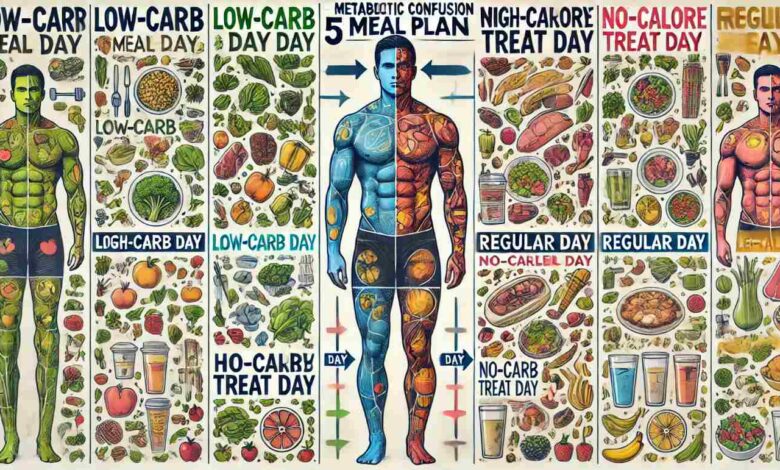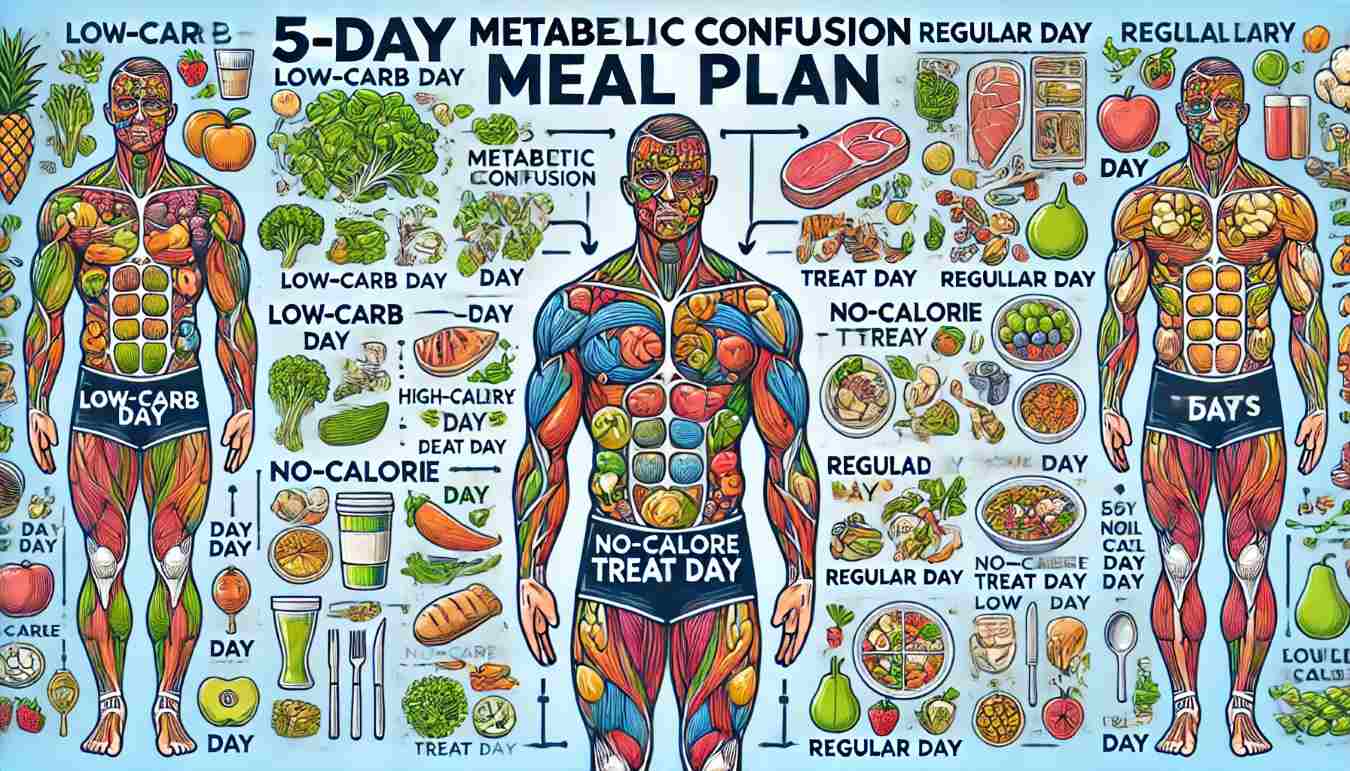How Does Metabolic Confusion Work? 3 Examples

What is Metabolic Confusion?
Metabolic confusion could be an example of caloric-controlled variations by switching between high-calorie and low calorie days. Their intention is to “trick” the metabolism so it remains effective and does not cave into a typical use of common menu-plan diets which starve the body between meals. By changing the way you eat on a daily basis, your body doesn’t get used to eating certain amounts of calories at specific time periods, leading to burning more fat and losing weight consistently.
How Does Metabolic Confusion Work?
Metabolic confusion means changing how many calories you eat daily to keep your metabolism active. The idea is simple: on some days, you eat fewer calories, and on others, you eat more, so your body doesn’t get used to a fixed amount. This helps prevent your metabolism from slowing down, which often happens during long diets.
It’s a bit like intermittent fasting, but instead of skipping meals, you change how much you eat each day. This makes it easier to enjoy your favorite foods without strict rules. Plus, knowing you’ll have higher-calorie days can stop cravings and prevent overeating on low-calorie days.
Example 1: Weekly Shift Strategy
In this method, your calorie intake changes throughout the week. For instance:
- Monday to Wednesday: Low-calorie days (around 1,200–1,500 calories)
- Thursday to Friday: High-calorie days (about 2,000–2,300 calories)
- Saturday and Sunday: Moderate calorie days (1,600–1,800 calories)
This example helps keep your metabolism from slowing down by preventing your body from getting used to a routine. It’s a good way to lose weight because it lets you enjoy high-calorie days, so you don’t feel deprived.
Example 2: Alternate-Day Strategy
Here, the pattern alternates between high- and low-calorie days:
- Day 1: High-calorie (above maintenance)
- Day 2: Low-calorie (around 1,200 calories)
- Day 3: High-calorie
- Day 4: Low-calorie
Switching between different routines helps keep your metabolism active and works well for people who prefer small, achievable goals. On high-calorie days, you might end up eating too much if you don’t plan carefully.
Example 3: High-Low Weeks
A more extended version of the calorie-shift strategy involves alternating weekly cycles:
- Week 1: High-calorie intake throughout the week (aiming for slight calorie surplus)
- Week 2: Low-calorie intake each day (20–25% below maintenance)
This example is great for people who want to reset after eating a lot of sweets, without messing up their diet too much. It can boost your motivation, especially if you don’t feel like following strict calorie limits every day.

Benefits of Metabolic Confusion
Metabolic confusion has more benefits than just weight loss. It can make dieting easier by giving you some flexibility, so you don’t feel tired of strict rules. You can enjoy small treats without increasing cravings, which helps you stick to the plan better. Some studies suggest that changing calorie intake can keep your metabolism working faster and lead to better fat loss over time. It also reduces mental stress, making it easier to stay on a calorie deficit for a long period.
Other Potential Benefits
Allows for flexibility
Metabolic confusion is different from most calorie-restricting diets that make you eat boring or tasteless food. There are no strict rules. You can choose how many high-calorie days you want in a week or even over ten days. This makes it easier to enjoy special occasions like birthdays, holidays, or parties without feeling guilty. Its flexible approach lets you enjoy your favorite meals while still working towards better health.
Less hunger
Going on a low-calorie diet for any notable length of time ensures you will feel hungry and tired all the time because your body lacks enough energy to power basic things like, oh I dunno, existence. This can give you physical prompts to eat like stomach growls and energy slumps.
That can often lead to odd eating patterns like binge-eating and overeating, which are the major hurdles people on a restricted diet usually face. The metabolism confusion diet takes a much better approach than cheat days, where you get to have all the junk food with no limits (which generally means stuffing your face and feeling sick) because our very favorite friend starvation mode now starts jumping up and down shouting “me next!” It is about increasing your calorie through a thoughtful and purposeful approach.
This approach stops one feeling deprived, keeps hunger away, and the risk of overeating is decreased. If you are much more active, or if your own state (such as age and gender) demands higher caloric intake levels to maintain a healthy body composition you may need far in excess of 2,000 calories on many days and not too terribly long ago. This way of eating is designed to help keep your body in balance, allowing it enough energy without causing you to become overly hungry or create cravings.
Challenges and Limitations
Metabolic confusion sounds interesting, but it also has some challenges. To make it work, you need to plan how to change your calories. Plus, there isn’t much scientific proof that this diet works well in the long run. Some experts think the body’s metabolism might not change as much as people say, and results can be different for everyone. So, while this diet might help with short-term weight loss, it’s not a long-term solution. It also shouldn’t replace the healthy lifestyle changes needed for overall well being.
The Bottom Line
Metabolic confusion is a different way to diet. It keeps your metabolism active and stops your weight from getting stuck. This method changes your eating plan, either weekly or on alternate days, giving you some freedom and mental breaks during weight loss. It helps avoid weight loss plateaus and keeps you motivated. But you need to plan it carefully by eating low calorie yet nutritious food. Once you learn to eat well and stay active, you can add metabolic confusion whenever needed to stay on track.





